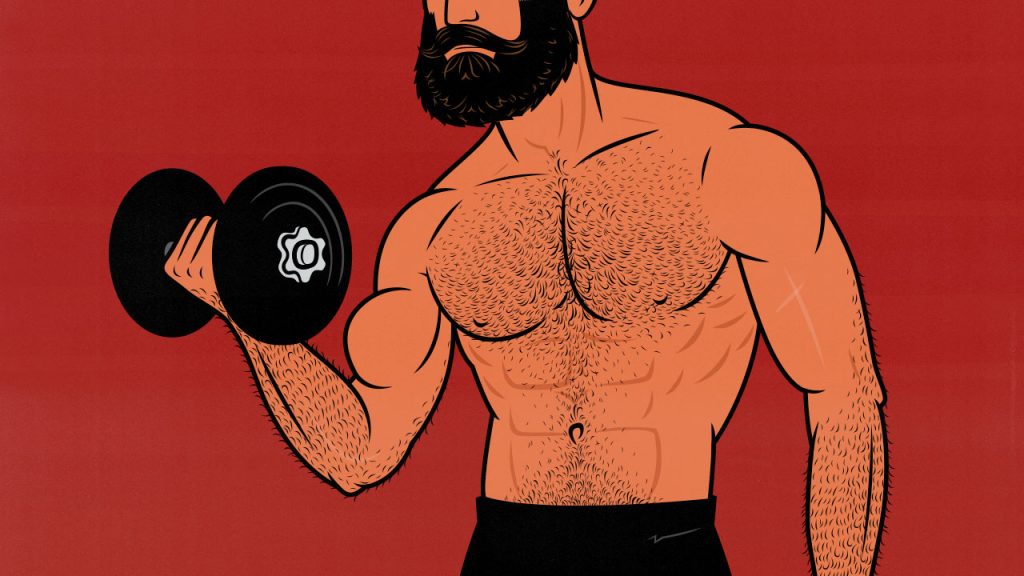
The Perfect Bro Split Workout Routine
The Bro Split is surprisingly controversial. Most guys assume it’s for casual lifters who never took the time to learn how to program a proper workout split. That’s not the case. 2/3rds of competitive bodybuilders use Bro Splits (study).
A well-designed Bro Split can be incredibly good for building muscle, especially in your arms and shoulders. In this article, we’ll teach you how to do it right. We’ll talk about why it works, how to build your own Bro Split, and then give you a sample routine you can follow (and customize).
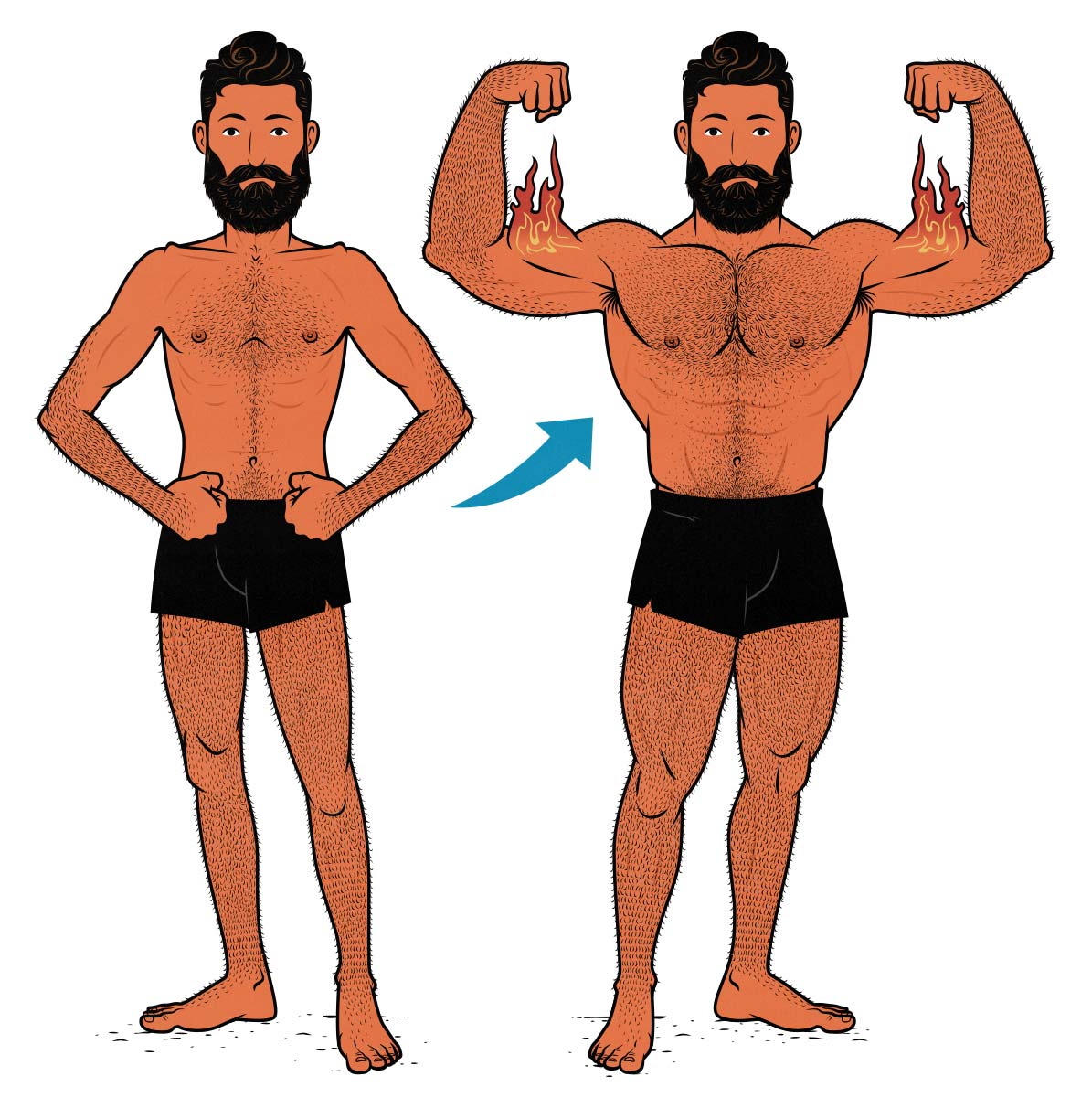
What’s a Bro Split?
A Bro Split is a body-part split with an emphasis on muscle size and aesthetics. “Bros” are lifters who follow their hearts instead of their brains. As such, the Bro Split isn’t rooted in science or knowledge but rather in experience and wisdom. These workout routines are passed down from wide mentor to slender apprentice.
Bro Splits are pure bodybuilding routines. They use hypertrophy training principles to maximize your rate of muscle growth, especially in the muscles you’re most eager to grow. Most of them are 5-day workout splits that favour relatively high training volumes.
What separates the Bro Split from other workout splits is its focus on just one body part per workout. Here’s an example of a classic Bro Split:
- Monday: Chest Day
- Tuesday: Back Day
- Wednesday: Shoulder Day
- Thursday: Leg Day
- Friday: Arm Day
- Saturday: Rest
- Sunday: Rest
If you’re paying attention, you may notice something strange about that schedule. “Arms” isn’t a muscle group. Neither is “legs.” Our limbs contain several different muscle groups with entirely different functions. Bro Splits are more nuanced than they seem.
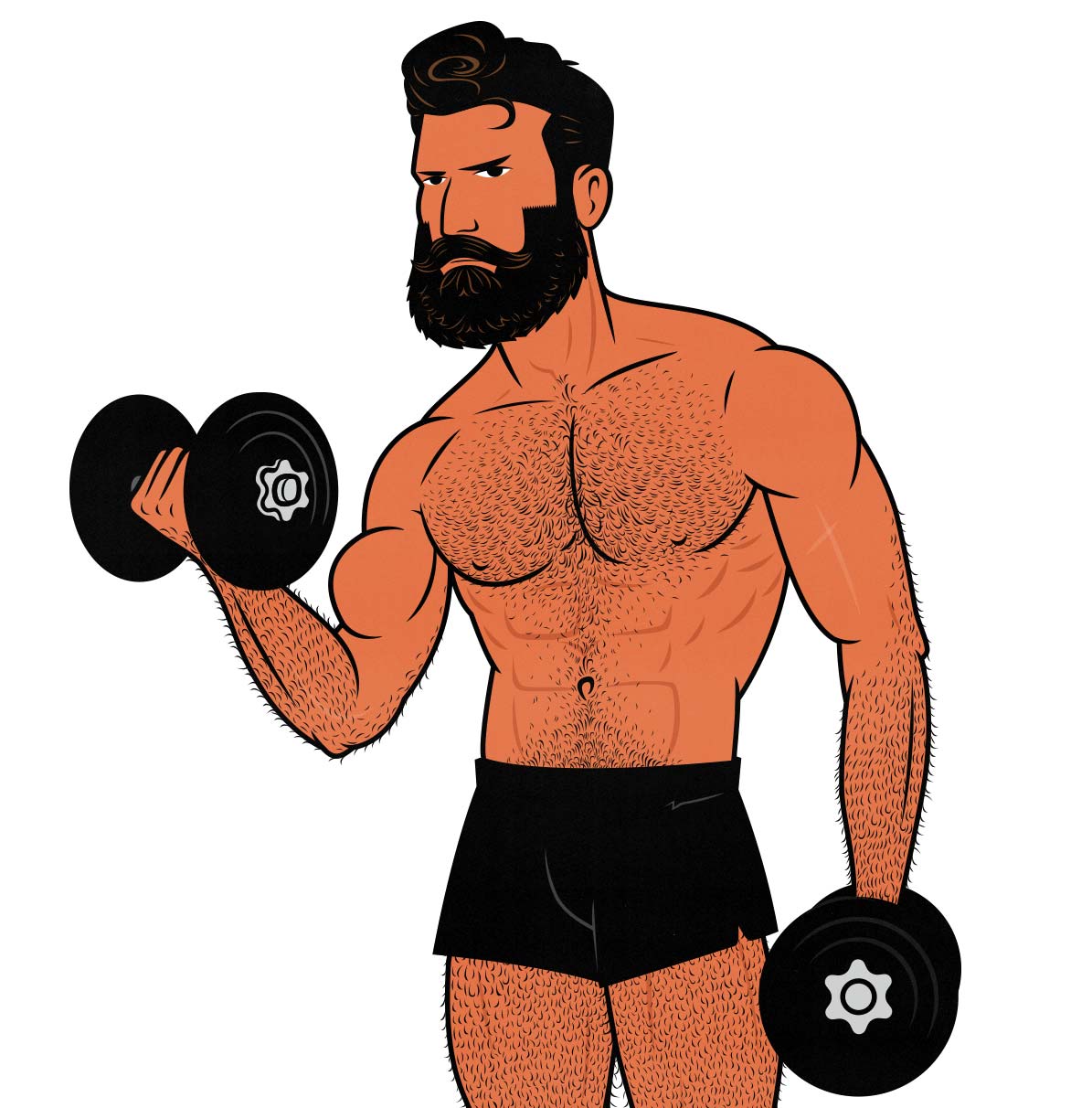
Debunking the Criticisms
The most common criticism levelled against the Bro Split is that the training frequency is too low. Muscles recover 2–4 days after a workout, so if you’re only training each muscle group once per week, you’re missing out on 3–5 days of muscle growth (study).
Furthermore, if you dedicate an entire workout to just one muscle group, it’s too much volume all at once. Instead of recovering in 2–4 days, it might take closer to a week before you feel ready to train that muscle again.
The problem with that argument is that Bro Splits train one body part per workout, and each of those body parts contains several different muscle groups.
- Monday may indeed be Chest Day, but most pressing movements do a pretty good job of training your shoulders and triceps, too.
- Tuesday may be Back Day, but it probably starts with deadlifts, which do a great job of training your hips. Moreover, most pulling exercises train the biceps and forearms.
- Wednesday is Leg Day, which might have lifts like front squats, which also train the back and serratus muscles. Plus, guys often do their ab exercises on leg day.
- Thursday is Shoulder Day, which probably includes pressing and pulling, working the chest, back, biceps, and triceps.
- Friday is Arm Day, which focuses on arm exercises but can also include lifts like the close-grip bench press and lateral raise, working your chest and shoulders.
A good Bro Split will have you training your arms and shoulders three times per week, your chest and back 2–3 per week, and your legs 1–2 times per week. That training frequency might not be enough to maximize quad growth, but that’s not what Bro splits are for. They’re designed for guys who are trying to build formidable upper bodies.
They’re designed to build the “classic” male physique most guys are intuitively drawn to, with broad shoulders, a thick chest, a wide back, and strong arms. If that’s the type of physique you want, a Bro Split will help you build it.
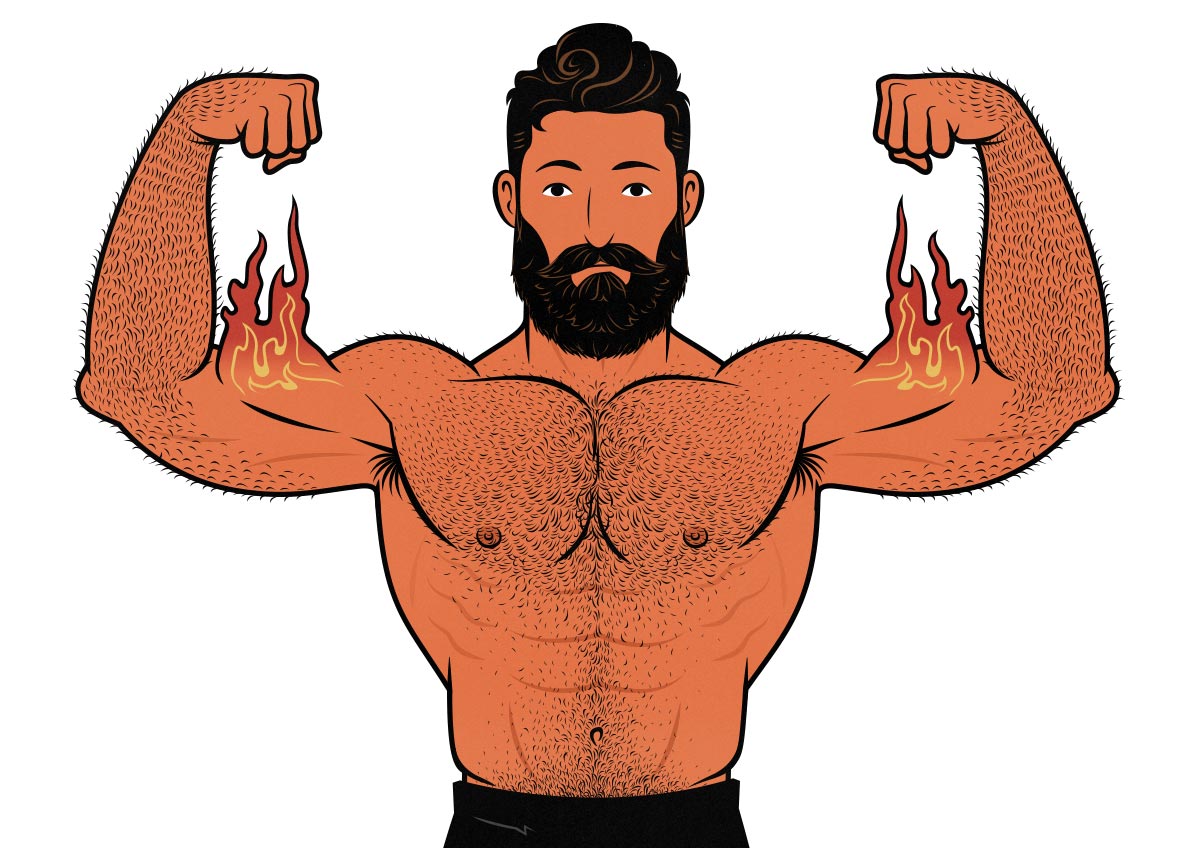
The Advantages of Bro Splits
Bro Splits have been popular for many generations, surviving because they work, and growing better over time. Here’s why they work so well:
- Focus: Bro Splits allow you to focus on one goal per workout. If your only goal is to train your arms, you have an abundance of time and energy to accomplish that goal. Instead of doing a good arm workout, you can do the perfect arm workout.
- Exercise Variety: If you’re doing full-body workouts, you’ll do the big compound lifts several times per week. Every workout will have some sort of squat, hinge, press, and pull. By the time you finish those big lifts, you won’t have much energy left for smaller ones. With a Bro Split, you’re only doing those big compound lifts once per week, then moving on to several smaller ones, radically increasing exercise variety and thus simulating a wider variety of muscle fibres.
- Recovery: Bro Splits train each muscle group several times per week but with varying intensity. Your arms can easily recover from the arm work you do on Chest Day and Back Day, and they have a full week to recover from the onslaught of Arm Day.
- Volume: As you build more muscle, those muscles grow tougher, making it harder to stimulate more muscle growth. The Bro Split offers a good solution to that problem. By devoting an entire workout to stimulating just one body part, it’s easy to get enough good volume to stimulate muscle growth.
- Every Tool is On the Table: Because you have more than enough time to recover, nothing is held back. You can do drop sets, supersets, or giant sets. You can do reverse pyramid training, rest-pause, or train past failure.
Other training splits have different ways of offering these same advantages, and some come along with advantages of their own. The Bro Split isn’t necessarily the best training split, but it’s up there among the best. If you want to know more, I wrote an article on training splits on Bony to Beastly.
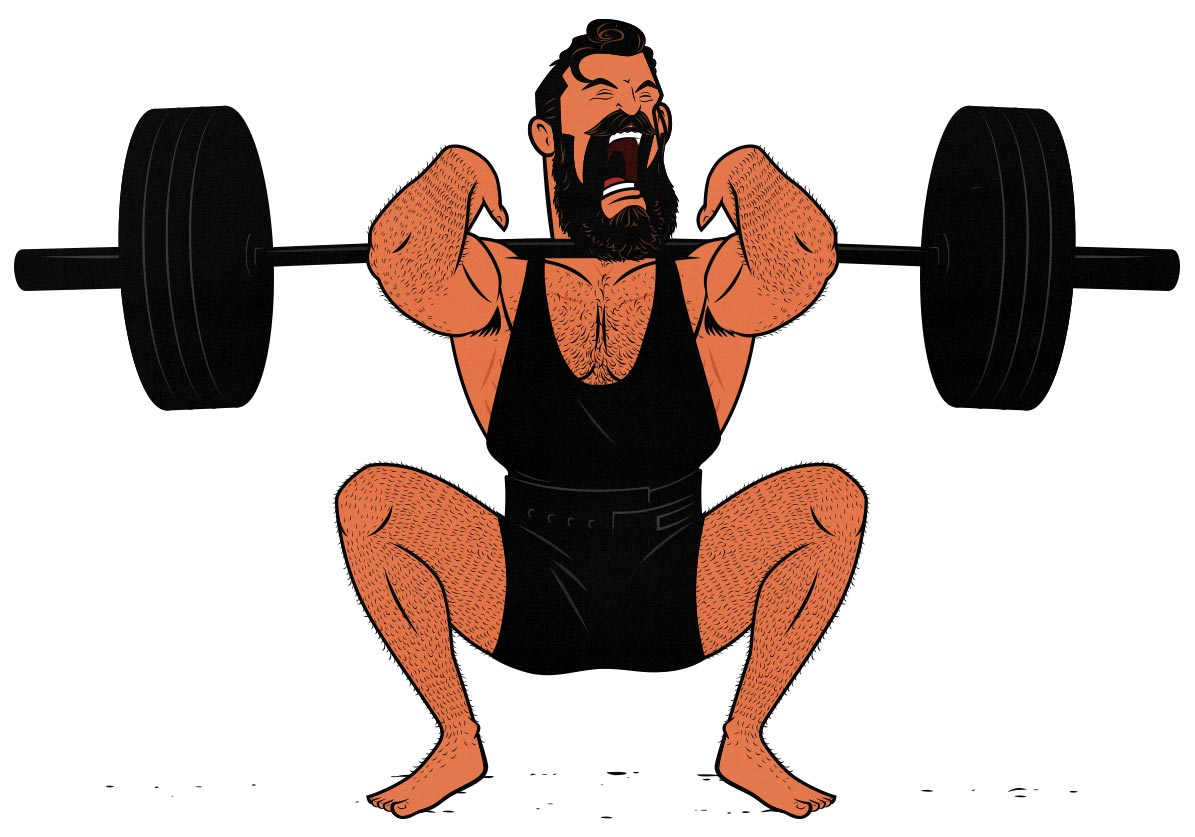
Bro Splits Aren’t for Beginners
Bro splits are great for intermediate lifters, and they’re especially popular among the most advanced. The best bodybuilders in the world tend to use them. However, they aren’t nearly as good for beginners.
Beginners are weaker, with smaller muscles. Even when they push themselves hard, they aren’t working as much muscle mass. It isn’t nearly as fatiguing. As a result, it’s much easier for them to train all of their muscles in a single workout. This makes full-body workouts especially effective for beginners.
The other advantage of full-body workouts is that they give us more practice. Instead of bench pressing just once per week, you’d be doing it three times per week, improving your lifting technique much faster.
Overall, full-body workouts are much better for beginners. Once they start to become cumbersome, though, workout splits start to make more sense. If you’re looking for a good workout split, Bro Splits are a great choice.
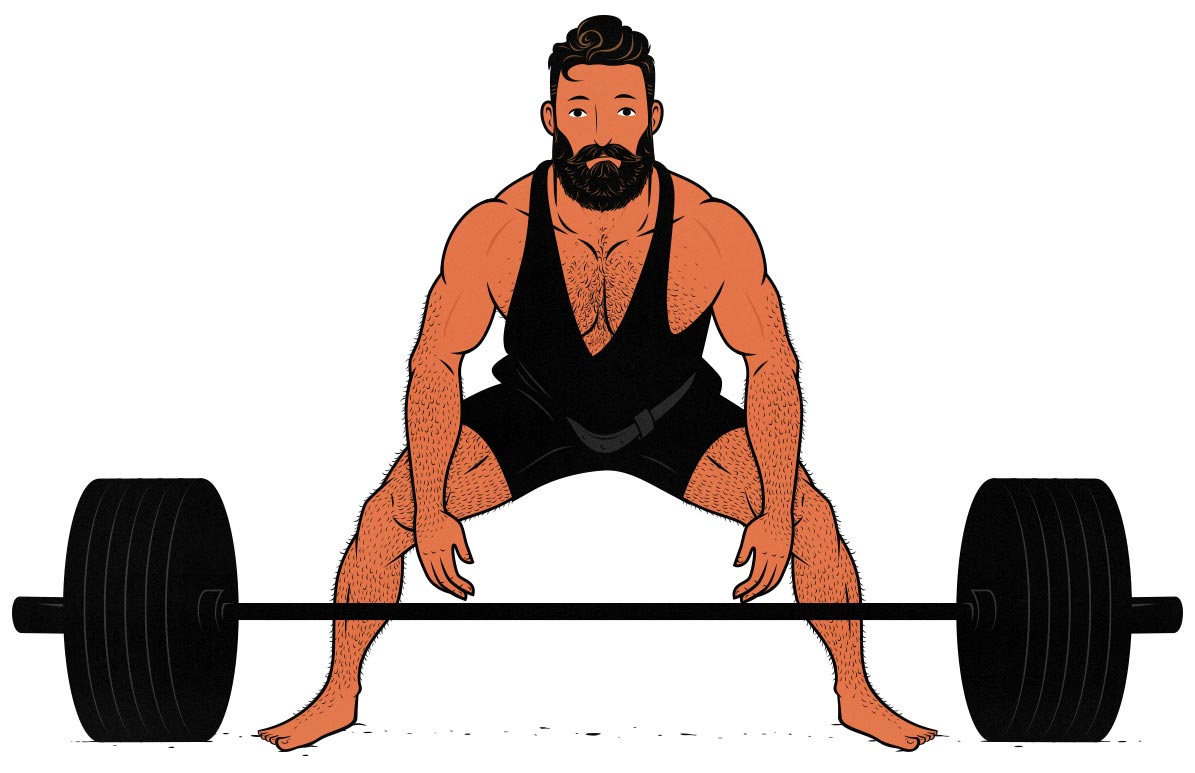
The Bro Split Workout Routine
The Bro Split has good bones we can build upon. We can keep the classic split, training just one body part each workout, but we want to lean into how those body parts overlap with one another. We want to intentionally bring our triceps and shoulders into Chest Day, our biceps and spinal erectors into Back Day, and our chests and backs into Arm Day. That way, we get the ideal training frequency, at least for our upper-body muscles.
I’ve reordered the workouts to put the Shoulder Day before the Leg Day. This gives your spinal erectors an extra day to recover before hammering them again leg day. It also gives an extra day for your shoulders to recover before training them again on Arm Day. Finally, it lets us sneak in some extra chest work into Arm Day under the guise of being a front delt exercise.
Day 1: Chest Day
The main goal of Chest Day is to stimulate the mid, lower, and upper pecs through a deep range of motion, allowing you to build a thick, wide chest. We can do this with the bench press, dips, and incline press. That’s a complete chest routine.
The secondary goal is to stimulate your shoulders and triceps. The bench press, dips, and incline press already work your shoulders and triceps. All we need are some overhead extensions to work the long head of your triceps.
| Exercise | Sets | Reps |
|---|---|---|
| Bench Press | 3–4 sets | 6-12 reps |
| Bodyweight Dips | 3 sets | As Many As Possible (AMRAP) |
| Incline Press | 3 sets | 8-12 reps |
| Overhead Tricep Extensions | 3 sets | 12-15 reps |
Day 2: Back Day
The main goal of Back Day is to stimulate the myriad muscles of your back: your lats, traps, rear delts, rotator cuff, rhomboids, and spinal erectors. Deadlift variations train all those muscles quite well. We’ll use Romanian deadlifts because they’re a bit less tiring, saving more energy for the other exercises. Pull-ups (and pulldowns) work your lats under a deeper stretch and do a great job of stimulating your lower lats. Rows add even more volume.
With the back fully trained, we still have time for bicep curls. You can do them as straight sets or drop sets.
| Exercise | Sets | Reps |
|---|---|---|
| Romanian Deadlift | 2 sets | 10–15 reps |
| Pull-Ups (or Pulldowns) | 3 sets | AMRAP |
| One-Arm Rows | 3 sets | 10–15 reps |
| Overhand Cable Rows | 3 sets | 10–15 reps |
| Bicep Curls | 3 sets | 8-12 reps |
Day 3: Shoulder Day
Shoulder Day is designed to bulk up your front, side, and rear delts. The overhead press is ideal for your front delts but also works your upper chest, upper back, and triceps. Lateral raises are ideal for your side delts but also work your rear delts and upper traps. Rear delt flyes work your rear delts and upper back. Feel free to do them as drop sets.
After training your shoulders, we still have room for push-ups, adding even more volume for your front delts and giving your chest, triceps, and serratus muscles extra stimulation. Even better if you can do deficit push-ups, getting a deeper stretch on your chest and shoulders at the bottom of the range of motion.
| Exercise | Sets | Reps |
|---|---|---|
| Overhead Press | 4–5 sets | 6-10 reps |
| Lateral Raises | 3 sets | 12-15 reps |
| Push-Ups | 3 sets | AMRAP |
| Rear Delt Flyes | 3 sets | 12-15 reps |
Day 4: Leg Day
Leg Day is simple yet brutal. It begins with high-bar or front squats, which emphasize your quads. Then we move to the leg press, giving your quads even more work. From there, we go to Lying leg curls for your hamstrings and calf raises for your calves.
With your legs fully trained, you might still have enough vigour to train your abs. If you can muster the energy, now’s a great time for cable crunches or hanging leg raises.
| Exercise | Sets | Reps |
|---|---|---|
| High-Bar Squat | 3–4 sets | 6-12 reps |
| Leg Press | 3 sets | 8-12 reps |
| Lying Leg Curls | 3 sets | 10-15 reps |
| Calf Raises | 3 sets | 12-15 reps |
| Cable Crunches | 3 sets | 12–15 reps |
Day 5: Arm Day
The Bro Split is one of the few splits that sets aside an entire workout for your arms. I think this is one of its greatest strengths. We don’t want to squander this opportunity by beginning with compound exercises. Instead, we’ll dive right into bicep curls. I recommend starting with a heavy set of barbell curls.
Next comes a triceps-dominant pressing variation, such as a close-grip bench press (or triceps dip). The goal here is to warm up your elbow joint while getting in some good tricep, chest, and shoulder work. Once your elbows are warmed up, you can dive into skull crushers to finish off your triceps.
The hammer curls train your brachialis and brachioradialis along with your biceps, finishing off your forearm flexors. And then come the lateral raises. That’s because we’re counting shoulders as part of the arms. This lets us train our side delts twice per week, helping you build broader shoulders.
| Exercise | Sets | Reps |
|---|---|---|
| Barbell Curls | 3–5 sets | 6-12 reps |
| Close-Grip Bench Press | 3–5 sets | 8-12 reps |
| Skull Crushers | 3 sets | 10-15 reps |
| Hammer Curls | 3 sets | 10-15 reps |
| Lateral Raises | 3 sets | 12–15 reps |
How to Do This Bro Split
This is a classic 5-day Bro Split workout routine. If you’re familiar with the evidence-based fitness community, it may seem to break some rules. It doesn’t. Not really. It just flexes them.
You’ll be training hard, breathing heavily, and resting relatively little. That’s how these workouts are designed. The volume is on the higher side to account for the shorter rest times. The frequency is on the lower side to allow for harder training.
- Exercise selection: Choose exercises that suit your body and your goals. If you prefer weighted dips to bench presses, choose weighted dips. If you prefer front squats to high-bar squats, choose front squats. If you prefer chin-ups to pull-ups, choose chin-ups.
- Volume: We have 4–5 exercises in each workout. That tends to be the best for building muscle (full explanation). If you want short workouts, trim off the last exercise. If you want volume, add another exercise for a muscle that still has some juice left.
- Progression: The goal is to get gradually stronger over time. If you hit your rep target last workout, add a little weight. If you’re still trying to add more reps, try to get more total reps than last time. For example, if you got 13, 11, 10, and 9 reps (43 reps) last workout, try to get 44+ reps this time.
- Rest times: These are dense workouts with short rest times, as is common with classic bodybuilding routines. Rest for 2 minutes between sets of compound exercises. Rest for 1 minute between sets on isolation exercises. You can take longer rest times, but your workouts may start to drag.
- Reps in Reserve: Classic bodybuilding routines require vigorous effort. Push yourself hard on each exercise, trying to lift more weight or eke out more reps than last time. Leave 0–1 rep in reserve. Feel free to take your isolation lifts all the way to failure.
- Schedule: The rest days can be anywhere. Feel free to move them around.
- Muscle-Building Diet: You need enough food to fuel muscle growth. If you’re skinny-fat or overweight, you can get extra energy from your body fat. If you’re thin or lean, you’ll need to get that energy from food—you’ll need to gain weight.
Conclusion
The Bro Split may not be smart, but it’s wise. It’s a great workout split for intermediate lifters who want to bulk up their upper bodies. If you haven’t tried it yet, I highly recommend it. It’s a fun and effective way to train.
As with any workout routine, remember to eat enough food to support muscle growth. If you aren’t skinny-fat or overweight, that probably means eating a bulking diet. You’ll know you need to eat more food if you’re struggling with progressive overload—if you aren’t able to add any weight or reps to your lifts each week.
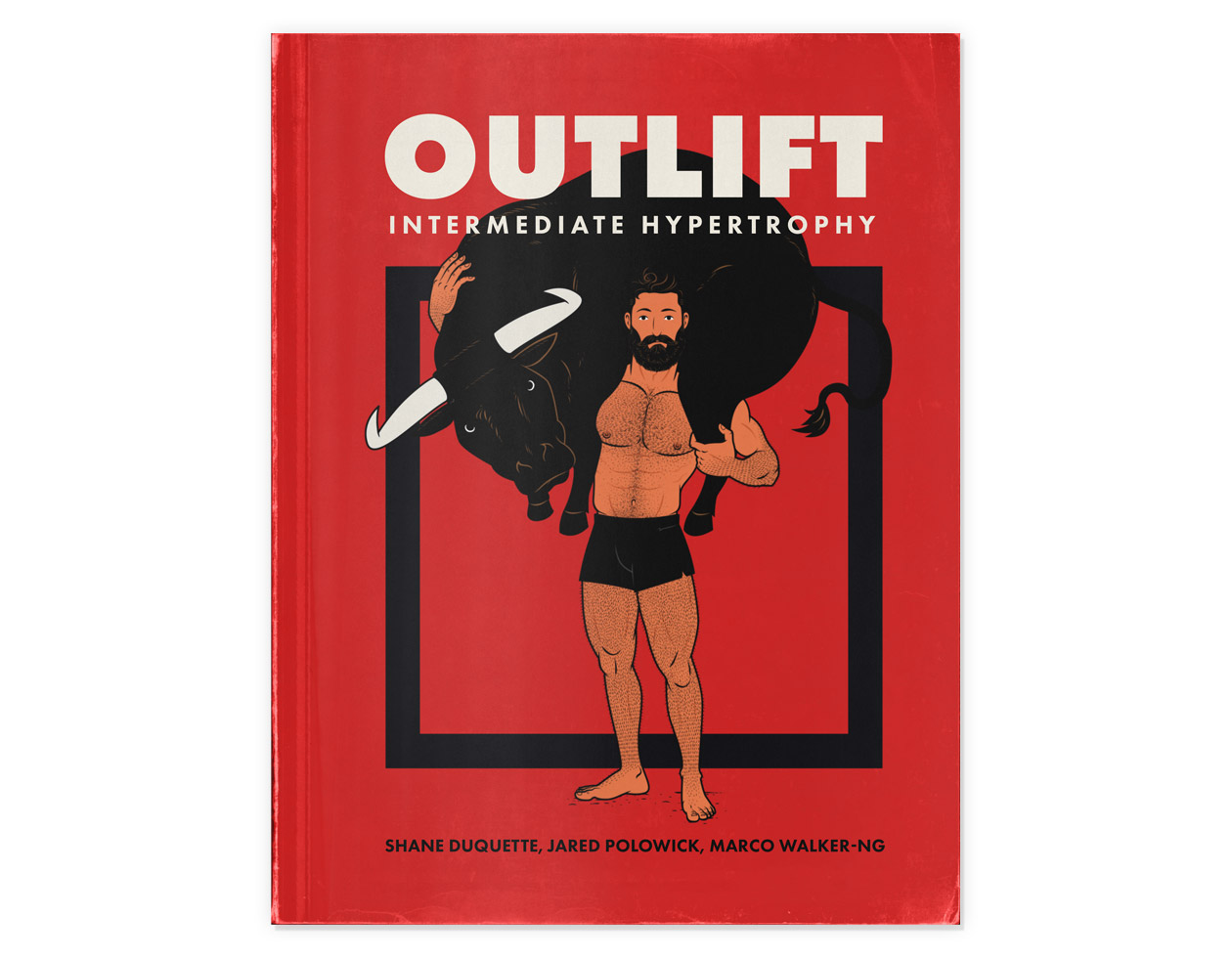
If you want more muscle-building information, we have a free muscle-building newsletter. If you want a customizable training plan, check out our Outlift Intermediate Program. You can pick how many days you want to train and how much volume you can handle, then choose your exercises from carefully curated dropdown menus. These workouts are periodized, let you track your weight and reps, and recommend how much weight to lift next time. Plus, it comes with a hefty lifting guide.
If you haven’t gained your first 15–30 pounds of muscle yet, check out our Bony to Beastly Program. We’ll get you there in the next six months, guaranteed.
Shane Duquette is the co-founder of Outlift, Bony to Beastly, and Bony to Bombshell. He's a certified conditioning coach with a degree in design from York University in Toronto, Canada. He's personally gained 70 pounds and has over a decade of experience helping over 10,000 skinny people bulk up.


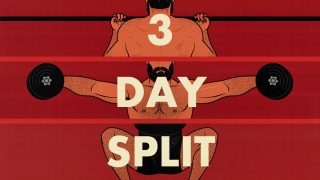
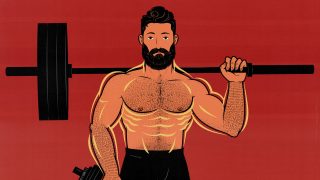
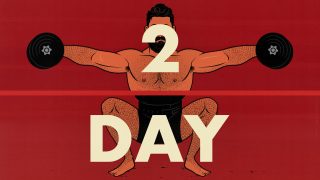
Thank you, Shane, for your reply. I changed my routine by reading the new content on your site, and came to a new routine that works. I mixed all the contents of the site and came up with this routine.
I lift five days a week. The first day I do bench press, incline press, dumbbell shoulder press, and dumbbell chest fly. Skull crushers on the second day. Deadlift on the third day. Overhead press, accessories on the fourth day, squats and accessories on the last day. I devote myself to my arms, but I do both barbell incline press and barbell row on arm day to increase the training frequency of those muscles and because these two movements overlap with my arms.
My strength increases a lot, but my muscles grow less, so I am changing it to 6-15 repetitions to see how it works. I also considered the volume of training for the main muscles to be about 15 sets. For muscles like the arms, 12 sets.
I train my main muscles with combined movements, what do you think about it, Shane, is there anything I should change??
My pleasure, man.
That all sounds great. I’m not quite understanding your second day, but if you’re training hard, and you’re sure each set is within a 0–2 reps of failure, then you’re probably stimulating plenty of muscle growth.
Measure your muscles every month or two, tracking their growth. Also track your weight gain. Make sure you’re steadily gaining weight. That will give you the concrete data you need to adjust what you’re doing based on the results you’re getting.
Hi Shane
Could you use 6,12,25 routine on maybe chest or shoulders days
For sure! That’s a great way to do program your workouts.
Great article Shane, interesting subject you covered here. The sample workout is definitely not “casual lifting” anymore. ( I like that it includes some calf raises.) Is such amount of volume still feasible for guys with average genetics? Is there, by your research or experience, any real advantage compared to a 4-day split like the ones you already covered?
Bro Splits are designed for bodybuilders who want to train both hard and often. It’s a maximalist approach to building muscle. However, keep in mind that these routines typically use relatively short rest times. Maybe you rest 2 minutes between sets on the first exercise, 1 minute in subsequent exercises. You can move through the routine relatively quickly. And since you aren’t training that much overall muscle mass, you leave the gym feeling fairly fresh.
Adding more workout days doesn’t necessarily give better results, but it keeps your workouts shorter and more manageable OR allows you to focus on more goals at once.
With 4-day splits, you can make full use of supersets, alternating between chin-ups and squats, or bench presses and rows, or deadlifts and dips. That’s a very efficient way of training. If you can set aside 4 days for lifting, you’ve got more than enough time to gain a ton of muscle and strength.
When Marco was training professional and Olympic athletes, he had them on 4-day upper/lower splits. Mind you, they didn’t have an Arm Day.
I built almost all of my muscle by training 3–4 days per week.
Thank you Shane, for your reply. With such short rests I am bleeding reps in my second and third set of the compund lifts. I think an arm day is nice but my personal experience is that I have to trade every set of bicep curl against a set of rows or chin ups. Otherwise elbow tendons feels sore all the time. That’s a reason why I do even with a 4 day split only one biceps exercise per week. It just not worth the trade. Best regards Sebastian
It’s normal to bleed reps with shorter rest times and/or when you take your sets closer to failure. As long as you account for that when programming, it can work well. It all depends on how the whole program looks.
Sounds like you’ve found a system that works for you. How are you doing your arm exercises? If you’re using a straight barbell or using a straight pull-up bar, that might be why your elbows feel beat up after too much volume. Sometimes switching to dumbbells or even curl-bars/EZ-Bars can fix it. I’m not sure what’s causing the issue for you, though.
Keep it up, man!
Thanks for the reply! I think my elbow issues were a mixture of overreaching and bad pull-up/chin-up technique. I purchased a pair of Versa Gripps for the heavy pulling. (Big recommendation. Helps a lot for the Deadlift.)
I think my home gym equipment is now on point. I have a straight bar, adjustable dumbbells, a short multi-grip barbell, and a multi-grip pull-up bar. My arm work is usually done with the multi-grip bar using a slightly angled grip. (The multi-grip bar looks like a very short football or Swiss bar.) Chin-ups are usually done with Versa Gripps in a neutral grip.
So my conclusion is: I have to take things a bit slower. It is not a race. That is the really hard part. I was always a bit over-motivated.
My pleasure, man. That all sounds great.
Glad to hear you’re like the Versa Gripps, too. I love those things. So handy.
Great idea to switch to angled grips. I think combined with a more patient approach, you’ll do great.
Good luck, man!
Hi Shane, I love your content. This article motivated me to try the Bro Split, after about a year of full body workouts. Loving it so far, and seeing some good gains. Thanks!
Woot! That’s awesome.
The Bro Split is highly effective for those on anabolic steroids, but it still works for natural lifters too, and it’s fun to do.
Totally agree. Bro Splits are great fun and work wonderfully well.
Shane, I love this article and love your name ! This article makes perfect sense to me. I always find myself in the argument about what’s the best routine for bulking and I always come back to this one. It makes perfect sense. I have done the push, pull, legs and the upper/lower workout and the full body. But I’m a busy dad with two jobs and the bro split in the morning is ideal and fun for me. I get to destroy one body part without having to hit another one. Plus I feel I build better when I focus on one or two body parts, and like you said, you’re hitting the other ones anyway when you do certain movements. I’m going to keep doing bro splits because I keep getting results. Thanks man.
Thank you, other Shane.
I hear ya. I’m in a similar situation, and I like them, too 🙂
Hi Shane. Where would you personally fit shrugs into this workout plan ?
Hey Marc,
We don’t usually program shrugs because the traps already get plenty of work from deadlifts, overhead presses, lateral raises, and rows. Some people can definitely benefit from more trap work, though. Most people do shrugs towards the end of their Back Day workouts. That’s a good way of doing it.
Oh, I’m realizing you’re asking the other Shane.
Hi Shane, and thank you for this excellent bro split. I see you tried to sort of make some muscles be worked on twice a week or so, which is good. It’s a good alternative to the PPL. I did try the PPL for a few months, but I got tired of it, it’s just too much volume and too many days (my routine was 6 days), which is too much. On top of that, if you want to grow and build muscles, but you’re always in the gym everyday working out for hours, chance is that you’ll be overtrained and the muscles won’t grow. So your bro split is exactly what I was looking for, thank you!
My pleasure, Mike! Glad you like the look of it. Let me know what you think when you try it!
Yeah, I was trying to work most muscles twice per week. That isn’t absolutely mandatory, but it should help, mainly because it raises the total volume higher in a way that’s easier to recover from.
Hi Sir, Thank you for the article! In another article you have mentioned that our gains max out at 6 sets/muscle/workout. So how is the bro-split effective since we train only 1 muscle/day and it would be more than 6 sets? Thanks again!
In our volume article, I wrote, “You should do 3–12 sets per muscle per workout and train your muscles at least twice per week.”
I tried to follow those principles while putting together this Bro Split routine.
The Bro Split trains a group of muscle. For example, Chest Day includes your lower chest, mid chest, upper chest, shoulders, side delts, and triceps. Back day includes your lats, upper traps, mid traps, lower traps, rhomboids, teres major, spinal erectors (usually), biceps, brachialis, and brachioradialis. Arm Day includes your biceps, triceps, forearms, and probably some chest, back, and shoulder work. That means you can do a few different productive exercises in each workout.
Even then, you aren’t wrong. Part of what makes a Bro Split special is that it leans towards higher volume per muscle per workout, and it trains your muscles less often. I don’t think it’s the end of the world if you only train your legs once per week. It might not be totally optimal for leg growth, but that’s the Bro Split.
Old school splits are far from “not smart”. Every routine works, depends on how hard you train. After 46 years of training, I find “new school” ridiculous.
Just an opinion of course, but results are what they are.
Arnold, Sergio, Nubret and crew were very smart w/ their training, old-school splits.
PPL is just the same thing as a “bro-split”, only re-packaged by noobs.
Comical…
Thanks for the comment! I have a few quibbles:
I don’t disagree that most routines can work well, but that doesn’t mean they all work equally well.
The “old-school” you’re talking about is relatively new. You’re talking about the training splits that became popular as steroids were becoming popular, and you listed a bunch of steroid guys. Back before steroids, all the top bodybuilders were training their muscle groups more often, almost always with full-body workout routines. Now, more natural lifters are coming back around to that older way of training.
PPL is similar to a Bro Split, but it divides the body into Push/Pull/Legs, and it doesn’t have days for the arms or shoulders. That gives it a different feel, and it changes the results it gives a fair bit. Less emphasis on the arms and shoulders, more on everything else. So you’d expect smaller arms and bigger chests/backs/legs. Depends how you program them, though.
Hi Shane. I’ve done a variety of PPL, Upper/Lower and hybrid splits over the last couple of years, including your Outlift programme (a few times). I’m now doing a cut/recomp, and finding I recover a bit more slowly, plus at them moment I need a split that fits into a M-F work week – this seems ideal for all that.
I really like what you’ve done with this – sneaking some extra leg work into Back day with the RDLs, and chest work into Arm day. I’ve just started and really enjoying it so far. I made a couple of modifications that I thought I’d share, plus one query:
– On Chest day, I’m supersetting some light flys with the tricep extension to get a little more chest volume. I also snuck in some hanging leg raises.
– On Back day I’m doing ‘touch and go’ deadlifts with a trap bar instead of RDLs (that’s just personal preference), but limiting it to two sets seems to really help in terms of fatigue.
– For Shoulder day (today…) I am doing seated machine shoulder presses followed by a kneeling land mine press, both of which hit my upper chest a bit more also, and finishing with deficit push ups and lateral raises. If that feels like too much chest this week I will adjust in week two.
– Leg day I plan to do pretty much as written but swapping seated leg extensions in for calf raises (life is too short for calf raises…).
– My question is re Arm day: Given my back will have had some good recovery time, do you think I can do AMRAP bodyweight chin ups for the first exercise, to get some extra back-work in as well as training biceps?
Thanks for reading!
Hey Liam, thank you! That’s awesome.
Yeah, eating in a calorie surplus improves recovery, whereas eating in a deficit hampers it. Most people reduce volume and cut back on the more fatiguing lifts. I really like your idea of using a forgiving split. That’s a smart way to do it.
Two sets of deadlifts should be plenty, and it should help with fatigue. That makes sense sense. Trap-bar deadlifts are fantastic. Only downside is that you might want something to specifically target your hamstrings. Maybe you want some leg curls in there somewhere.
You probably have more chest work than you need to maintain your chest while cutting. But I doubt it will be so much that it causes you any problems. Maybe it will even help you gain a bit of chest size and strength while cutting.
Life is definitely too short for calf raises. I included there here because most people who do Bro Splits want bigger calves. I don’t do them, though.
You can do AMRAP chin-ups, yep! Most back exercises are really easy to recover from (probably because they’re harder at shorter muscle lengths, not longer muscle lengths). You can almost always get away with more back volume. The main thing to watch out for is your elbows, especially if you’re using a straight chin-up bar. Sometimes that can give people golfer’s elbow. You’ll know if you start getting tendon pain along the insides of your elbows. The easiest solution is to use a neutral or angled grip. Some people don’t need to worry about it, though. Depends how sturdily your elbows are built and how much of a tolerance you’ve built up.
Good luck with your cut/recomp!
Thanks for the feedback Shane! Just finished Shoulder day and loving this split rn. I think it will become my go-to ‘easy’ split.
The trap bar deads, done keeping much of the tension on the way down, do seem to hit my hams in a way my regular ’heavy’ deadlifts don’t but will include leg curls on Leg day too.
Awesome 😀
Hi Shane, I’ve been on a full body split that I adopted from a bodybuilder friend of mine for the past 9 months. I saw great progress in the first half of that time but eventually it became too energy and time consuming (2 hours per workout).
I am building a new bro split for myself and your article and sample workout covers exactly everything I had in mind! I’ll be using it exactly for the next few weeks and possibly make some changes to better suit myself.
My only concern is you haven’t included an isolated exercise for forearms on arm day. I know hammer curls hit part of it and other compound lifts employ them as well but personally I want to grow my forearms significantly, they’re genetically on the skinnier side. Do you have any recommendations on what I can include for more beefy forearms?
Again, amazing article, keep it up!
Thank you, Uzair. Congrats on the progress!
Oi, yeah, 2 hours is a long time to train. You could definitely cut that down.
If you want to focus on your forearms, I’d also add wrist curls and extensions. 3–4 sets of each. I’ve got an article on forearm training here.
I’ve been doing this exact same Bro split with everything to positive failure that you published above for a month now but I don’t seem to be getting any bigger despite my diet and calories all being correct. (carnivore diet). Why could this be?
Hm. How much weight have you gained? And it sounds like all your measurements are the same? Any strength gains?
I’m not sure what you mean about eating the correct diet. We’ve never recommended the Carnivore Diet.
I’m moving onto this routine after doing calisthenics PPL routine and now seeing my shoulders and arms underdeveloped. (The reason for the soulders probably is because i didn’t do raises or rear delt exercises for the first year)
How do u recommend putting the rest days to be rested every day and not training the same in a row?